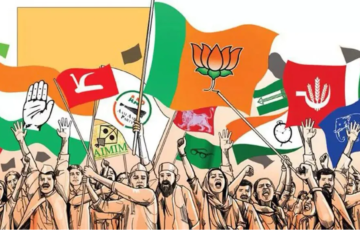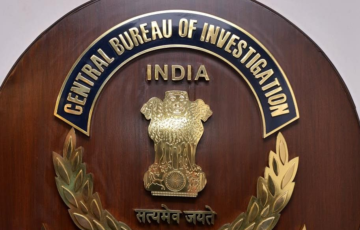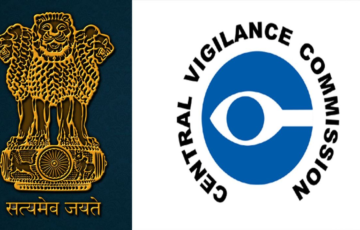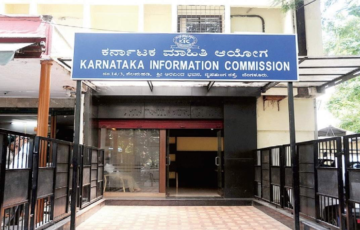COOPERATIVE SOCIETIES
Introduction
- A cooperative is a self-reliant, democratically governed business or organization where people voluntarily come together to meet common economic, social, and cultural needs. It’s based on principles like equality, equity, and solidarity. Gandhi saw cooperation as a way to empower people and decentralize power. Cooperative members value honesty, openness, social responsibility, and care for others. Cooperatives exist in various sectors and operate with a set of core principles that guide their actions and interactions with members and the community. They provide a unique model for collective ownership and decision-making.
Historical Background
Pre-Independence Era
- The history of the cooperative movement in India during the pre-independence era can be divided into several key phases:
- Initial Period (1904-1911): This phase marked the emergence of the cooperative movement in India. Prior to this period, farmers were often exploited by moneylenders who charged exorbitant interest rates. The plight of the farmers led to agitations against moneylenders in regions like Pune and Ahmednagar. In response to these issues, the government passed several acts to provide relief to farmers, including the Deccan Agricultural Relief Act (1879), the Land Improvement Loan Act (1883), and the Agriculturists Loan Act (1884). The Famine Commission of 1901 recommended providing loans to agriculturists to boost agriculture and prevent famine, leading to the passing of the Co-operative Society Act in 1904.
- Expansion Stage: The cooperative movement gained momentum with the Montague-Chelmsford Act of 1919, which made cooperation a provincial subject. Various Indian states enacted their own legislation to support and regulate cooperative societies. During this time, the membership of cooperative societies grew significantly. The first cooperative land mortgage banks were established in Punjab, followed by similar banks in Madras (1925) and Bombay (1926). The global economic downturn in 1929 had an impact on this period.
- Restructuring Phase: The restructuring phase began in 1930, marked by the appointment of various committees to examine and improve the cooperative movement. These committees included the Vijayaraghava Charya Committee in Madras, the Rehabilitation Enquiry Committees in Travancore and Mysore, the Kale Committee in Gwalior, the Mehta and Bhansali Committee in Bombay, and the Wace Committee in Punjab. The Indian Central Banking Enquiry Committee in 1931 highlighted the flaws in the cooperative movement, such as unnecessary delays and credit shortages. During this phase, new acts were passed to promote cooperative growth and long-term credit development, including the Madras Co-operative Societies Act of 1932 and the Madras Co-operative Land Mortgage Banks Act of 1934.
- Impact of World War II: The cooperative movement faced challenges during World War II, which hindered its progress. The war disrupted various aspects of economic and social life, and cooperative activities were affected as well.
- Overall, the pre-independence era of the cooperative movement in India saw the emergence of cooperative societies as a response to the economic difficulties faced by farmers and the exploitation by moneylenders. The movement gained support from the government, leading to the enactment of laws and the establishment of cooperative institutions to promote agricultural and rural development.
Constitutional Provisions
- The Indian Constitution provides for cooperative societies in three ways:
- Fundamental right: The 97th Constitutional Amendment Act, 2011 added the right to form cooperative societies as a fundamental right under Article 19(1)(c). This means that every citizen of India has the right to form a cooperative society for the purpose of carrying on any occupation, trade, or business.
- Directive Principle of State Policy: Article 43B of the Constitution states that the State shall promote the interests of cooperative societies. This means that the government has a duty to support and encourage the growth of cooperative societies.
- Part IXB: Part IXB of the Constitution was added by the 97th Constitutional Amendment Act, 2011. It contains provisions for the incorporation, regulation, and winding up of cooperative societies.
- Part IXB of the Constitution also provides for the establishment of a National Cooperative Development Corporation (NCDC) and a State Cooperative Development Corporation (SCDC) in each state. These corporations are responsible for promoting the development of cooperative societies in the country.
- The constitutional provisions for cooperative societies are important because they provide a legal framework for the establishment and operation of cooperative societies. They also recognize the importance of cooperative societies in the Indian economy and society.
Specific provisions contained in Part IXB of the Constitution:
- The number of directors in a cooperative society and their tenure of office shall be determined by the law of the state in which the society is registered.
- The cooperative society shall be democratically managed and the members shall have the right to participate in the management of the society.
- The cooperative society shall be audited annually by an independent auditor.
- The cooperative society shall be wound up if it becomes insolvent or if it fails to comply with the provisions of the law.
The constitutional provisions for cooperative societies have helped to strengthen the cooperative movement in India. Cooperative societies now play an important role in all sectors of the Indian economy, including agriculture, industry, and services.
Challenges faced by Cooperatives in India
The issues faced by the cooperative sector in India are significant challenges that have hindered the sector’s growth and effectiveness over the years. These issues have impacted the independence, management, and awareness of cooperative institutions, as well as their functional capabilities. Some major key issues faced by the cooperative sector in India:
- Government Interference: Cooperative societies were initially conceived as vehicles for grassroots empowerment and self-reliance. However, government interference has been a longstanding issue, with cooperatives often subject to bureaucratic control and political influence. This interference has hampered the autonomy of cooperative institutions, preventing them from functioning as truly independent entities. It has also sometimes resulted in the misallocation of resources and the neglect of cooperative principles.
- For example, in 2013, the government of Maharashtra passed a law that gave it sweeping powers to control the functioning of cooperative banks in the state. This law was widely criticized by cooperative leaders and activists as an attempt to undermine the autonomy of the cooperative movement.
- Mismanagement and Manipulation: The core idea behind cooperatives is to empower members and provide essential services. However, many cooperatives have suffered from mismanagement, including financial misappropriation and political manipulation. Managing institutions with a large number of shareholders can be challenging, leading to issues related to decision-making and resource allocation. Manipulation can result in the concentration of power in the hands of a few individuals, which is contrary to the democratic principles of cooperatives.
- For example, in 2016, the Central Bureau of Investigation arrested several former directors of the Punjab and Maharashtra Cooperative Bank for their alleged involvement in a multi-crore rupee loan scam.
- Lack of Awareness: The cooperative movement’s potential contributions to society, particularly in rural and agricultural development, are often not well-understood by the general population. Cooperative institutions are sometimes seen as avenues for accessing government subsidies and not as entities that can drive economic and social progress. A lack of awareness about the benefits and functioning of cooperatives has hindered their growth and effectiveness.
- For example, a survey conducted by the National Cooperative Union of India in 2019 found that only 38% of respondents were aware of the cooperative movement in India.
- Restricted Coverage: Many cooperative societies in India are relatively small in size, limiting their reach and impact. These societies often operate in specific geographical areas or focus on a single economic activity, which restricts their ability to diversify and scale their operations. Limited resources and membership can also hamper their ability to invest in infrastructure and technology.
- For example, in 2021, the average membership of a primary agricultural credit society in India was just 1,300.
- Functional Weakness: The shortage of trained and skilled workers has been a persistent challenge for the cooperative sector. This shortage can be attributed to a lack of dedicated training institutions and the failure to attract professionals and experts to work in cooperatives. The lack of a skilled workforce can affect the efficient management and governance of cooperative institutions.
- For example, a 2020 study by the National Council for Cooperative Training found that only 10% of cooperative employees in India had received formal training in cooperative management.
- Flaws in Operation: Several operational issues, such as poor infrastructure, ineffective administration, overreliance on government support, and a lack of professionalism, have hindered the functioning of cooperative societies. Non-conduct of elections and dormant membership can lead to leadership vacuum and operational inefficiency. Policy gaps and a shortage of human resources can further exacerbate these operational flaws.
- For example, a 2022 report by the Reserve Bank of India found that a significant number of cooperative banks in India were not following sound banking practices.
- Communication and Public Relations: The cooperative sector has struggled to effectively communicate its mission, goals, and benefits to the public. There is a need for comprehensive communication and public relations strategies to increase awareness and promote the cooperative model as a sustainable and community-centric approach to economic development.
- For example, a 2021 survey by the Indian Institute of Public Opinion found that only 15% of respondents were able to correctly identify the main objective of the cooperative movement in India.
Addressing these issues requires a multi-faceted approach, including legal and regulatory reforms to ensure the autonomy of cooperative societies, governance and management capacity-building programs, public awareness campaigns, and investments in infrastructure and training. A well-functioning cooperative sector has the potential to uplift rural communities and support inclusive economic development in India.
97th Constitutional Amendment Act
- The 97th Constitutional Amendment Act, 2011 was a landmark amendment to the Constitution of India that granted constitutional status to cooperative societies. The amendment also added a new Directive Principle of State Policy (DPSP) on the promotion of cooperative societies and inserted a new Part IXB into the Constitution, which contains provisions for the incorporation, regulation, and winding up of cooperative societies.
- The 97th Constitutional Amendment Act was passed in response to a long-standing demand from the cooperative movement in India. Cooperative societies have played an important role in the economic and social development of India, especially in the rural sector. However, the cooperative movement had been facing a number of challenges, including government interference, mismanagement, and lack of awareness.
- The 97th Constitutional Amendment Act was expected to address these challenges by providing a strong constitutional foundation for the cooperative movement. The amendment also aimed to promote the democratic and decentralized functioning of cooperative societies.
- Some of the key features of the 97th Constitutional Amendment Act:
- The amendment made the right to form cooperative societies a fundamental right under Article 19(1)(c) of the Constitution.
- The amendment added a new DPSP under Article 43B, which states that the State shall promote the interests of cooperative societies.
- The amendment inserted a new Part IXB into the Constitution, which contains provisions for the incorporation, regulation, and winding up of cooperative societies.
- Part IXB also provides for the establishment of a National Cooperative Development Corporation (NCDC) and a State Cooperative Development Corporation (SCDC) in each state.
- Part IXB also provides for the democratic and decentralized functioning of cooperative societies.
- The 97th Constitutional Amendment Act has been hailed as a major victory for the cooperative movement in India. The amendment is expected to strengthen the cooperative movement and help it to achieve its full potential.
|
Articles Related to Co-operative Societies at a Glance
| Article | Title or Description |
| Article 19 | Protection of certain rights regarding freedom of speech, etc., with reasonable restrictions. It includes the right to form cooperative societies. |
| Article 38 | State to secure a social order for the promotion of the welfare of the people. This includes the promotion of cooperative societies. |
| Article 43 | Promotion of cooperative societies and the principle of cooperation in state policy. |
| Article 43B | Directive Principle of State Policy on the promotion of cooperative societies. |
| Part IXB (Articles 243ZH-243ZT) | Constitutional provisions specifically related to co-operative societies in India. This part deals with the incorporation, regulation, and functioning of cooperative societies and the powers and responsibilities of state governments in this regard. |













